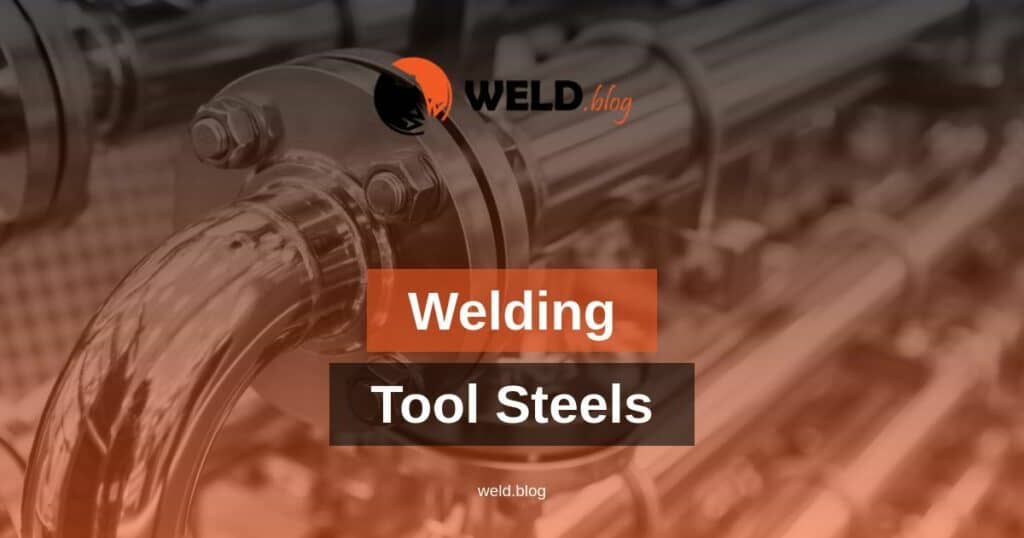Tool steels are designed and manufactured to have high resistance to abrasion, corrosion, and high temperatures. They are mainly used in the manufacturing of cutting and forming tools, dies, and molds due to their excellent mechanical properties. However, despite their high resistance, tool steels can be damaged, and welding is one of the options used to restore their functionality. In this article, we will discuss the welding of tool steels and the techniques used to ensure the durability of the welded parts.
Types of Tool Steels
Tool steels can be classified based on their composition and properties. The most common types of tool steels include:
- High-speed steels (HSS).
- Hot work steels.
- Cold work steels.
- Shock-resistant steels.
Welding Techniques
Welding is the process of joining two or more metal parts through the use of heat, pressure, and/or filler metal. However, tool steels have high carbon content, which makes them prone to cracking and brittle failure during welding. Therefore, it is essential to use appropriate welding techniques to avoid such failures.
Gas Tungsten Arc Welding (GTAW)
GTAW is also known as Tungsten Inert Gas (TIG) welding. This welding technique uses a non-consumable tungsten electrode and an inert gas to create an electric arc for melting the tool steel. The absence of filler material makes the process suitable for welding thin tool steel parts with a thickness of up to 1/16 inch. GTAW also allows for precision welding of intricate shapes, which makes it useful in the manufacturing of dies and molds.
Gas Metal Arc Welding (GMAW)
GMAW uses a consumable electrode and a shielding gas to protect the welding zone from contaminants. The technique also allows for welding at higher speeds compared to GTAW. However, it may not be suitable for welding high-carbon tool steels due to the risk of cracking.
Shielded Metal Arc Welding (SMAW)
SMAW, also known as stick welding, uses a consumable electrode coated with flux to protect the weld from contamination. It is suitable for welding large parts and can be used to weld tool steels up to 1.5 inches thick. However, the technique may result in porosity and cracking due to the high heat input and slow cooling.
Laser Beam Welding (LBW)
LBW uses a high-energy laser to melt the tool steel parts before fusing them together. The laser beam provides a concentrated heat input, resulting in a smaller heat-affected zone. LBW is suitable for welding thin and small tool steel parts, and it allows for precise control of the welding process.
Pre-Welding Preparation
Pre-welding preparation is critical to ensure the quality and durability of the welded tool steel parts. The preparation steps include:
- Cleaning the welding zone to remove any surface contaminants, such as oil, rust, and dirt. This can be achieved through mechanical cleaning, chemical cleaning, or ultrasonic cleaning.
- Preheating the tool steel to reduce the risk of cracking due to thermal stresses.
- Using appropriate welding techniques and filler metals to match the tool steel being welded.
Post-Welding Treatment
Post-welding treatment is necessary to ensure the integrity and durability of the welded tool steel parts. The treatment steps include:
- Heat treatment to relieve residual stresses and improve the mechanical properties of the welded parts.
- Machining to remove any excess material and achieve the desired dimensions.
Welding of tool steels requires appropriate techniques and pre and post-welding preparations to ensure the durability and functionality of the welded parts. GTAW, GMAW, SMAW, and LBW are some of the welding techniques used for welding tool steels, and their suitability depends on the type and thickness of the tool steel parts being welded. Proper pre and post-welding treatments ensure that the welded tool steel parts meet the desired mechanical properties and dimensions.

